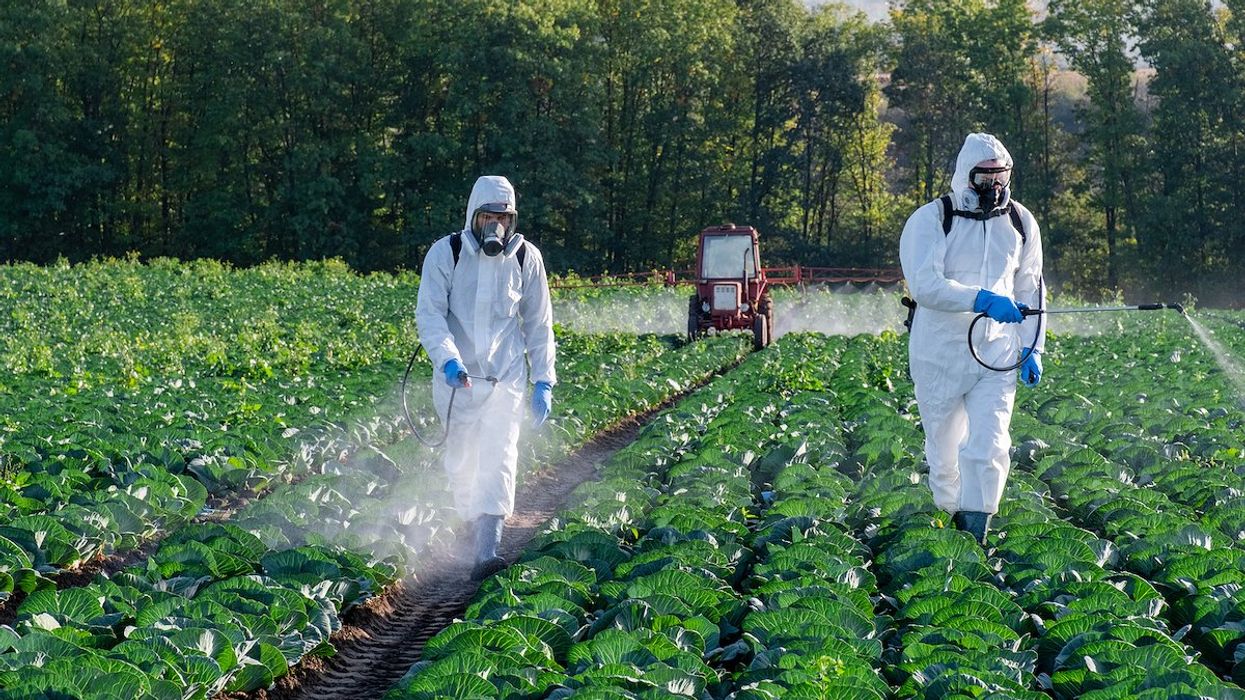
Byanka Santoyo’s voice breaks while she explains what SprayDays, California’s statewide pesticide notification system, launched on Monday, means to her.
“I told my daughter: When I die, I want this to be on my tombstone. I want everyone to know that I fought for you, your future, your family and their future,” she says.
Santoyo is a community organizer at the Center on Race, Poverty & the Environment, one of the 200 coalition partners that, for over a decade, has pushed California Department of Pesticide Regulation (DPR) to create a statewide notification system to let people know when potentially dangerous pesticides will be applied near them.
On Monday, the DPR officially launched that system in Kern County, where Santoyo lives. SprayDays showcases upcoming applications of pesticides classified by the state as “restricted materials” in fields across California between 48 and 24 hours in advance. People can register to get notifications about pesticide applications within one square-mile of their homes, workplaces, or schools.
The notification system details the intended application time, the product and its active ingredient, the application method (ground or by air), and the area where it will be applied.
“This system builds on more than 60 years of public pressure to end pesticide secrecy in California,” said Mark Weller, campaign director at Californians for Pesticide Reform, the coalition that led the push to get the system approved.“These communities have been demanding a heads up so that people can take precautions.”
Yanely Martínez, community organizer at Californians for Pesticide Reform, said that when her oldest son, now 18, was 10, he suffered a severe asthma attack. Later, she said, she found out it was related to pesticides applied near his school. “If I’d had this system at that moment, I wouldn’t have sent him to school that day. It would have saved me the panic, the tears, the fear of him ending up at the hospital.”
Ignored public health harms

Pesticides have been linked to chronic health problems like cancer, premature births, miscarriages, developmental disabilities, and damage to various organs; and acute health conditions like increased asthma attacks, nausea, and headaches.
In the country’s leading farming state, more than 180 million pounds of pesticides are sprayed on fields every year, according to the California Department of Pesticide Regulation. A 2018 analysis done by Californians for Pesticide Reform showed that, compared with counties where less than 24% of the population were Latinos, Latino-majority counties in California used up to 12 times more cancer-causing pesticides per person.
Like thousands of farmworkers in the state, Santoyo believes the chemicals have impacted her firsthand. Both of her parents are farmworkers, and since she was a kid, she remembers them telling her stories about their squad being accidentally showered in pesticides.
“A lot of pregnant women, their kids were born with disabilities. Others, the babies weren’t even born,” she said. Four years ago, her mother was diagnosed with kidney failure and has been in dialysis since, despite no family history of the disease, Santoyo said, and her doctors have told her it’s very likely she will be diagnosed as well.
“We don’t even know where this came from,” she added. “But I don’t want my daughter to go through this.”
Driving change from the ground up

Despite public outcry, the nation’s regulations against pesticide drift remain weak, EHN and Palabra reported in 2023. Many existing regulations have been the product of community organizing and activism. This notification system is no exception, Martínez said.
In 2017, the state passed AB617, a law that aims to reduce air pollution in disadvantaged communities and fund community-based solutions.
The push to include local pesticide notification systems as part of AB617 began in 2020, during the height of the pandemic, but it bled into 2021. “We had to drive for hours and hours to different counties, hours and hours to be heard,” Martínez said.
Weller recalled, “I can’t even count the number of times we went to Sacramento to meet with our legislative leaders, but also to meet with the heads of the Department of Pesticide Regulation. We’re talking big rooms filled with farmworkers demanding the right to know.”
Although the systems were referenced in AB617, officials in some of the counties with the highest pesticide use in the state like Kern County, Tulare, Fresno, San Joaquin and Madera counties declined to create local notification systems. So activists took it to the state and in 2021, California Governor Gavin Newsom allocated $10 million to the California Department of Pesticide Regulation (DPR) to develop a statewide notification system. The DPR launched pilot programs to test different versions in communities in Ventura, Riverside, Stanislaus, and Santa Cruz counties.
After the pilots were done, communities expressed concerns about the tested versions, arguing they were hard to navigate and asked users for a lot of personal information.
The final version of the system included most of the communities’ demands, Angel García, Californians for Pesticide Reform co-director, said. “They really took into account the feedback that they were hearing.”
One significant demand that wasn’t included, though, was providing the exact location of pesticide applications. Right now, people can sign up to get notices that application is scheduled within one square mile of an address. “But where in your square? Is it behind my house? Is it across the street?” Weller said. “Anywhere in your square is bad. But with some other pesticides, we want to know exactly where the harm is coming from.”
However, AB617 left the door open for changes to the notification system through an annual review process, where communities plan to keep pushing to get detailed information about exact application locations.
“This is a system that is monumental in giving advance warning, and that’s an opportunity for people to be able to take health precautions,” García said. “And I think it’s a testament of community power.”





